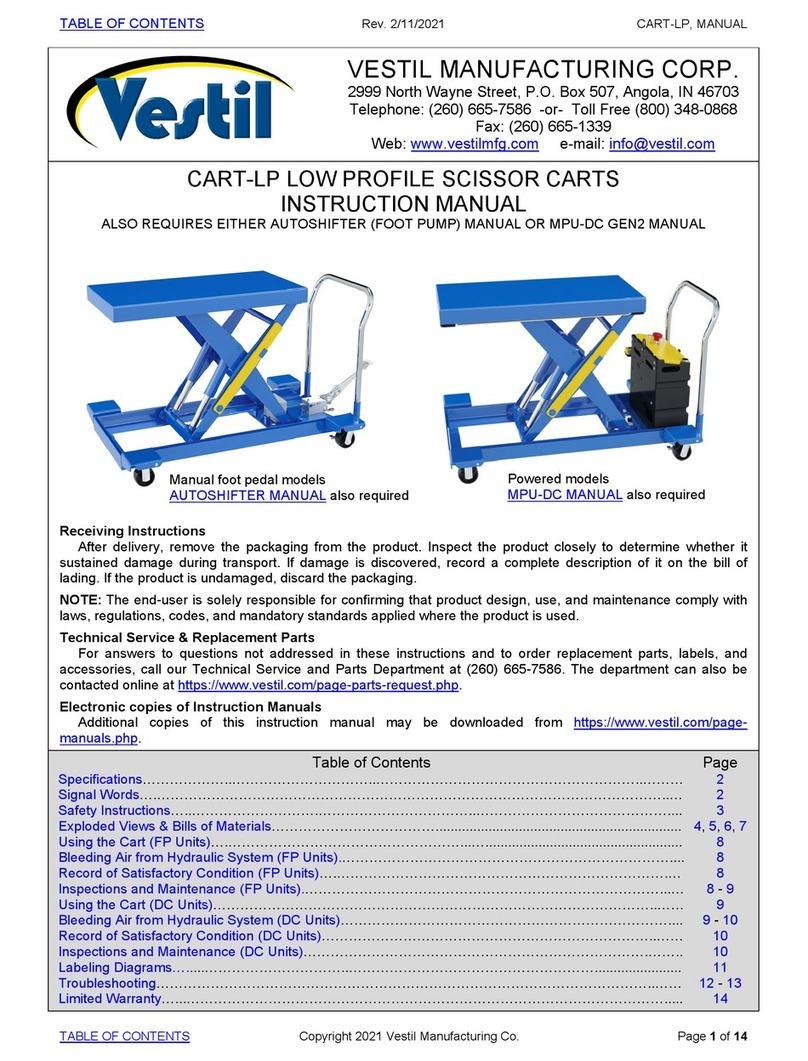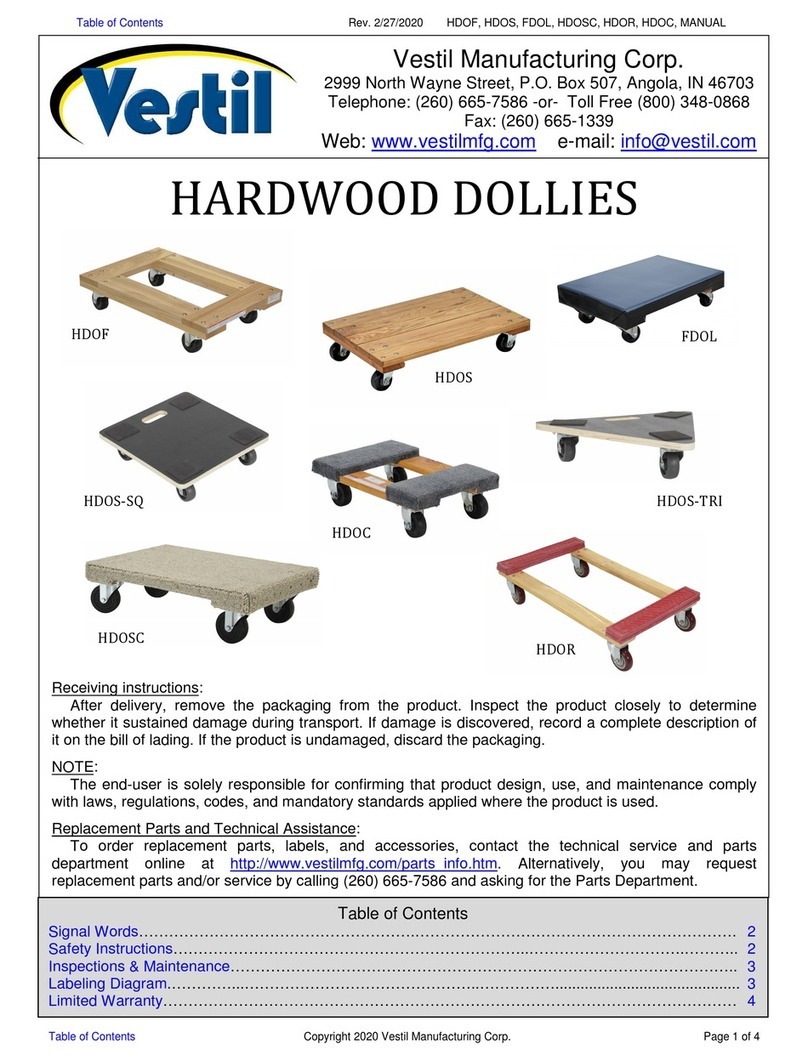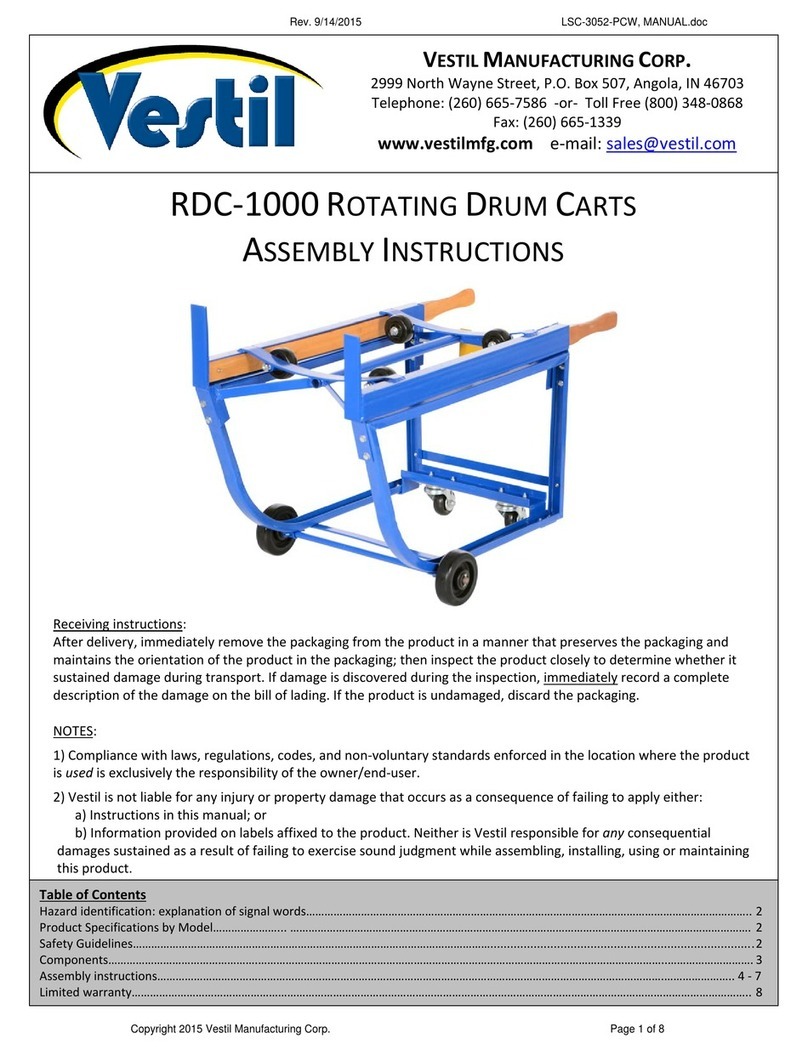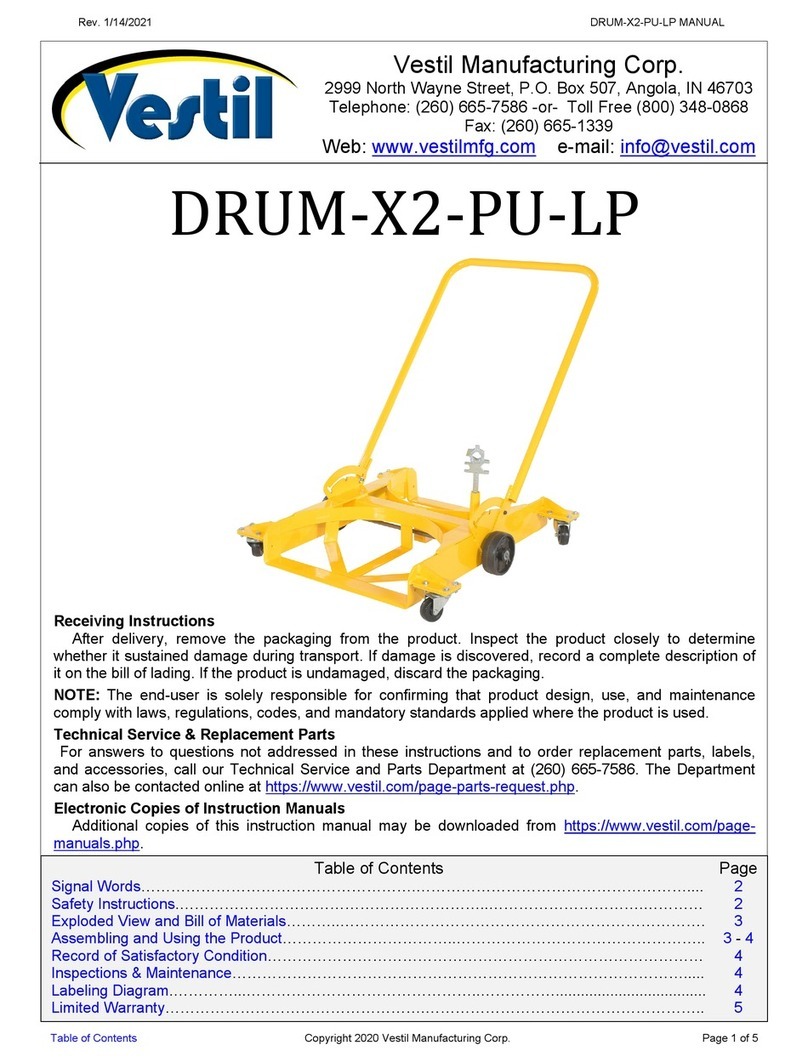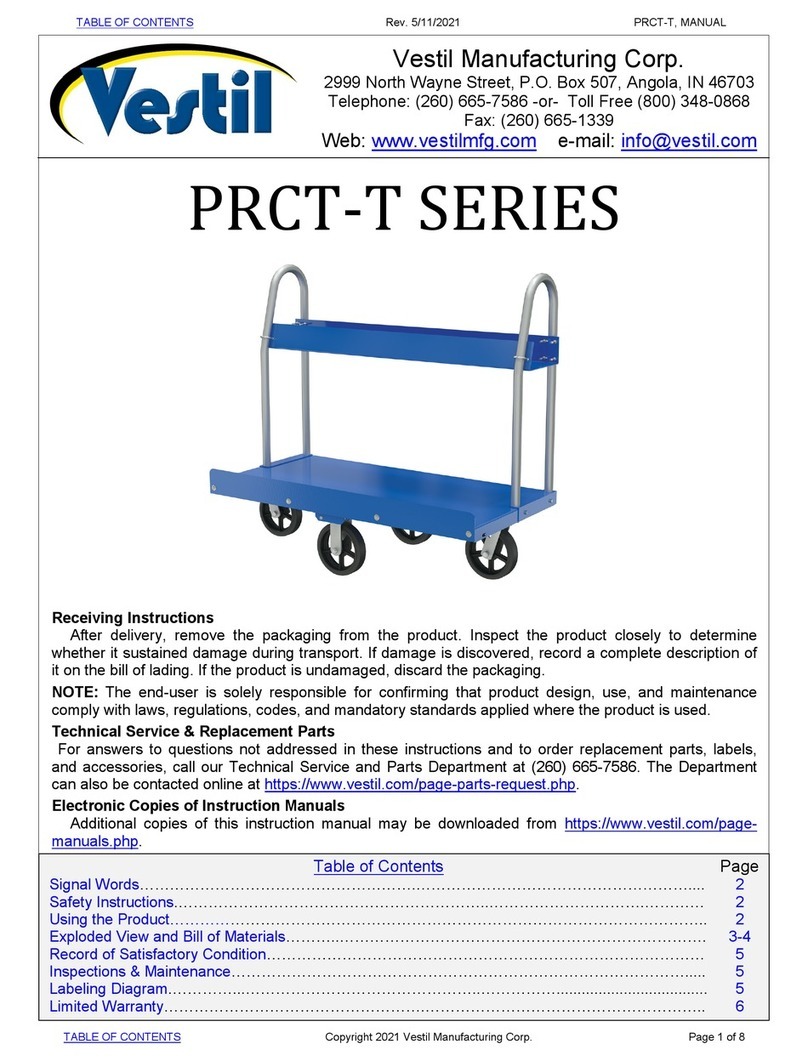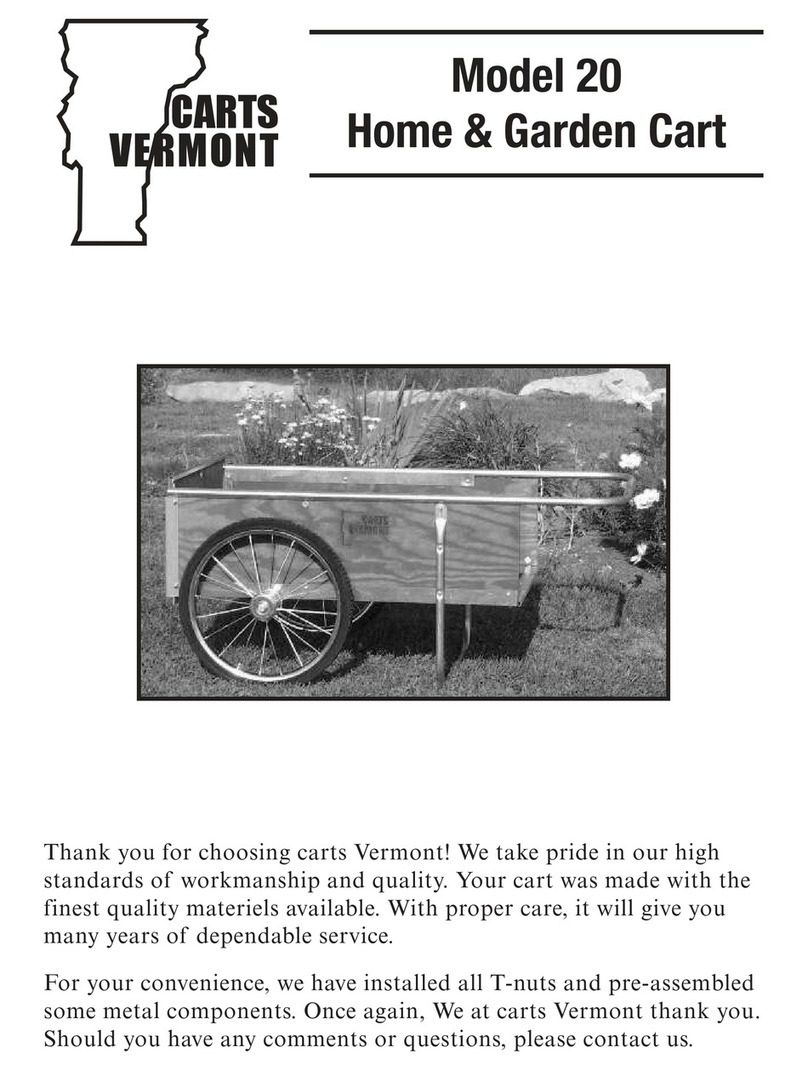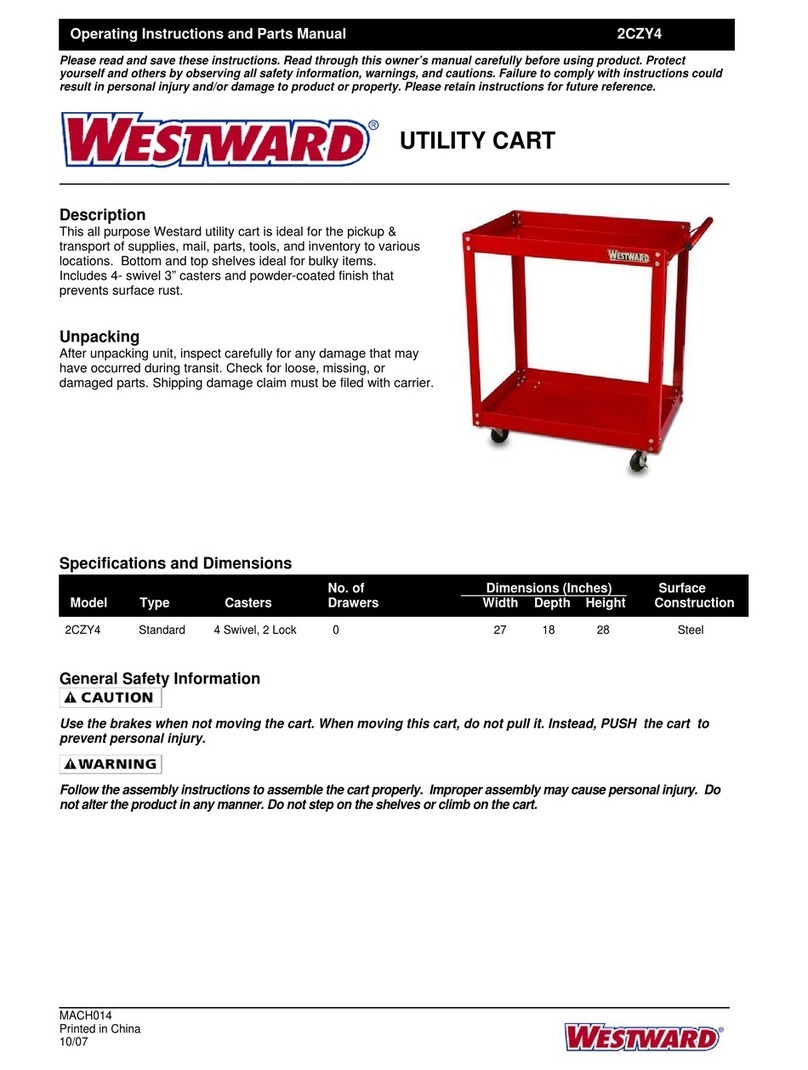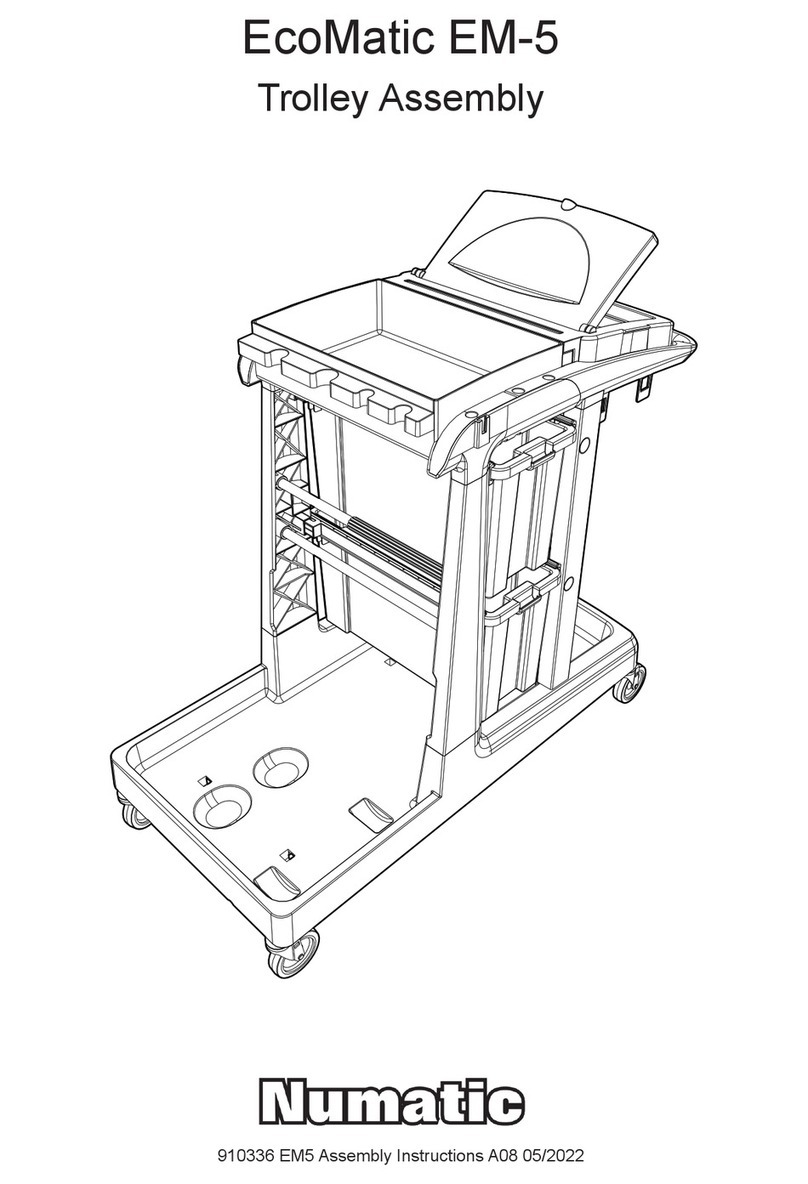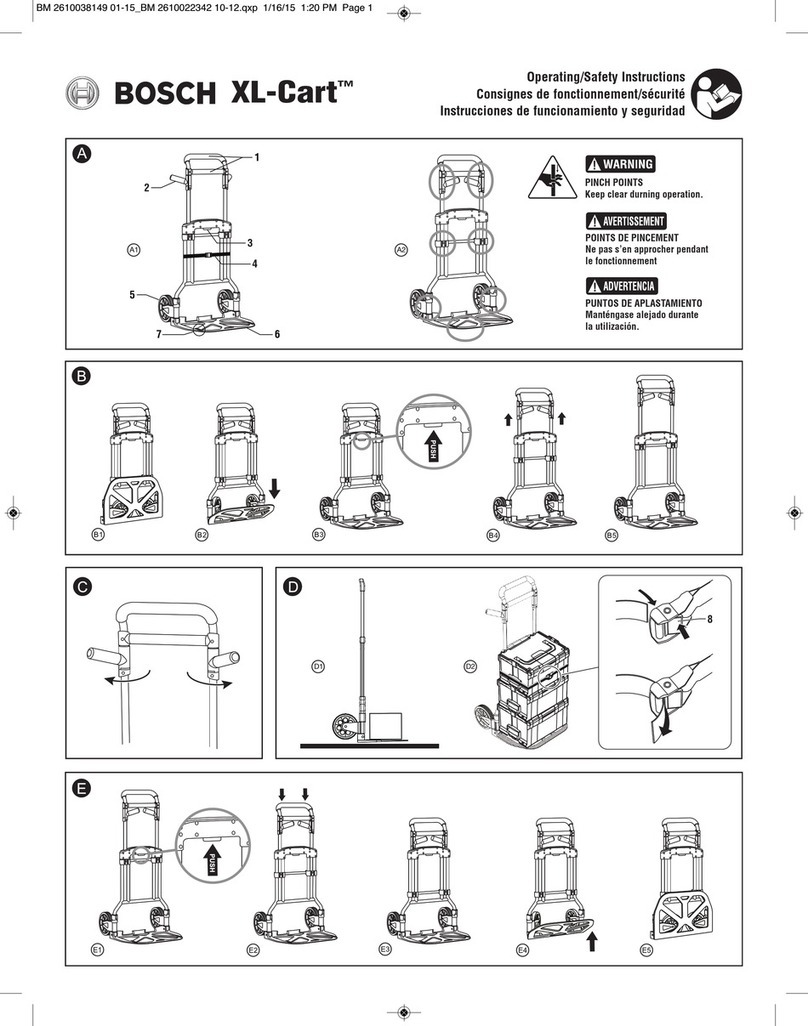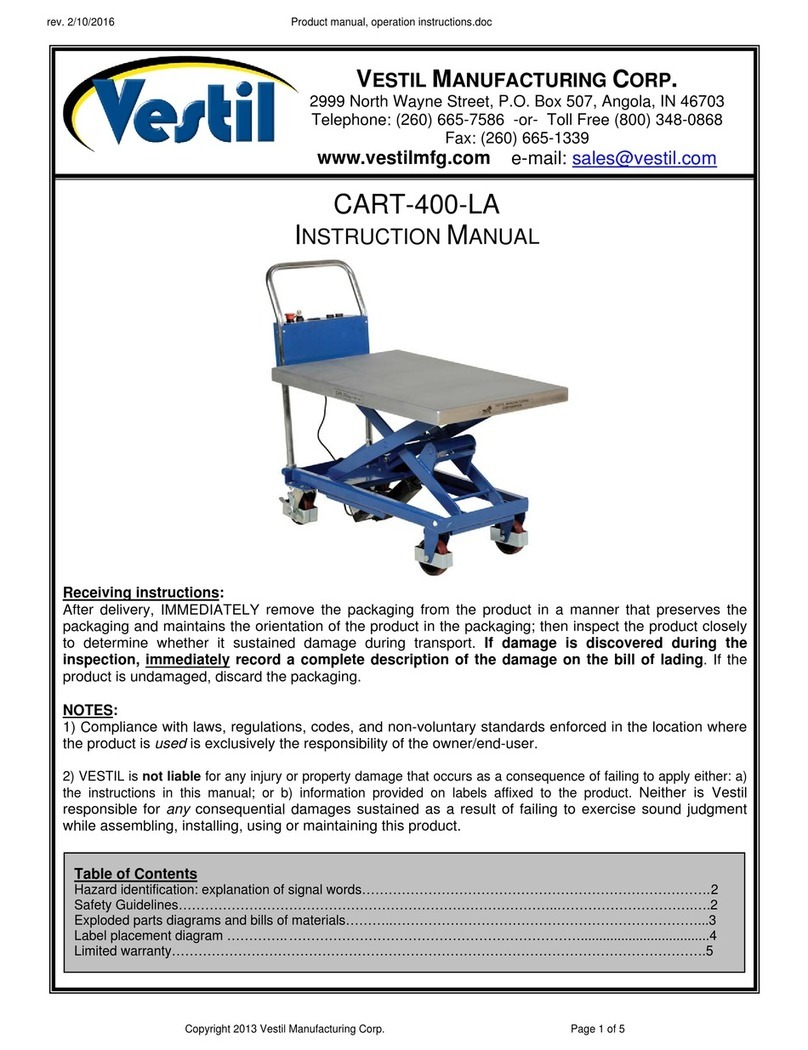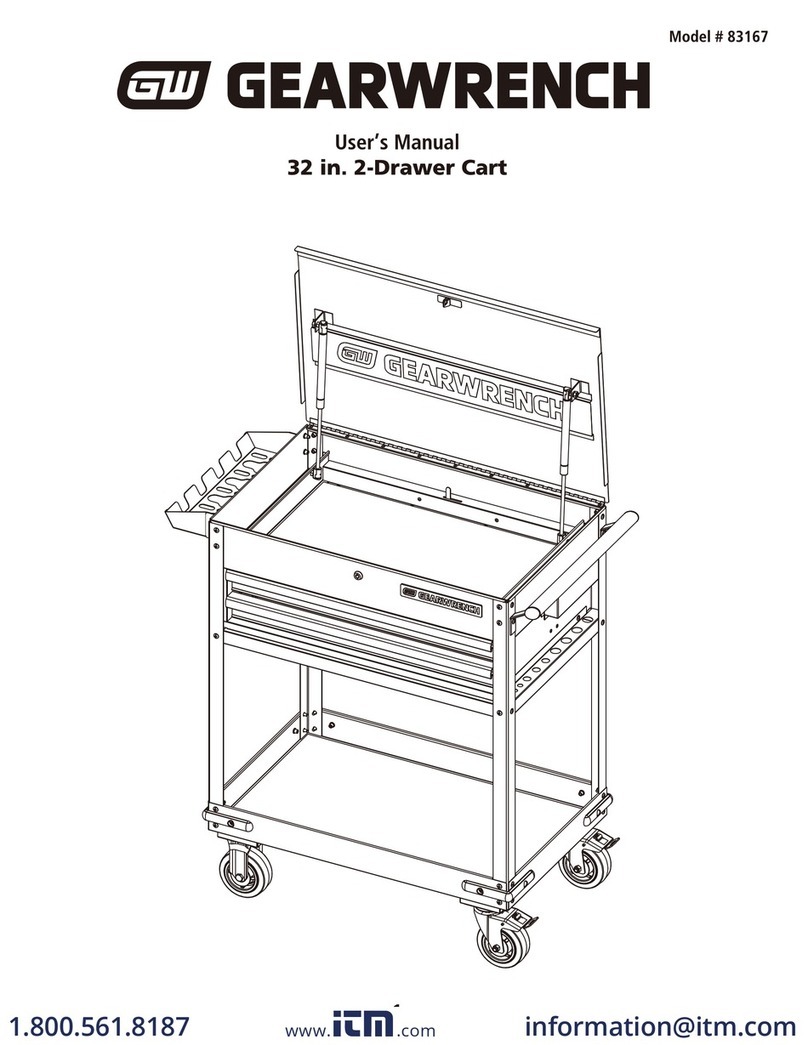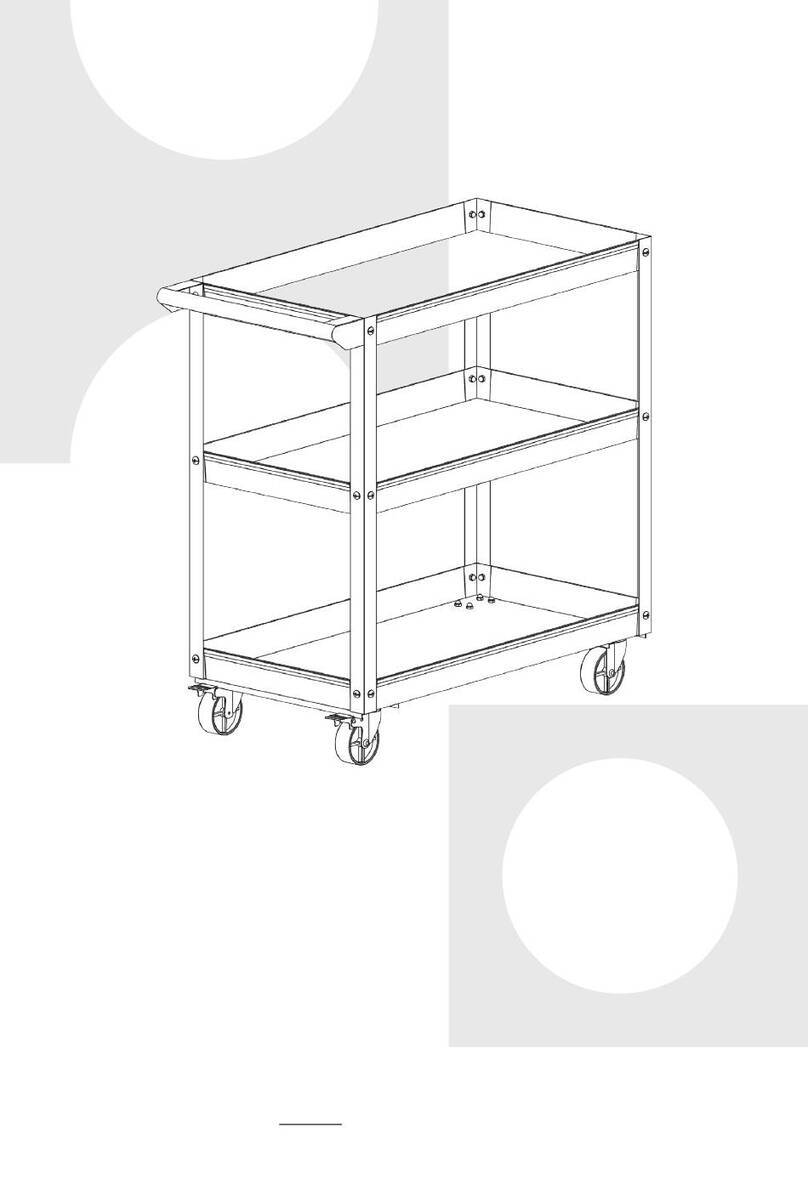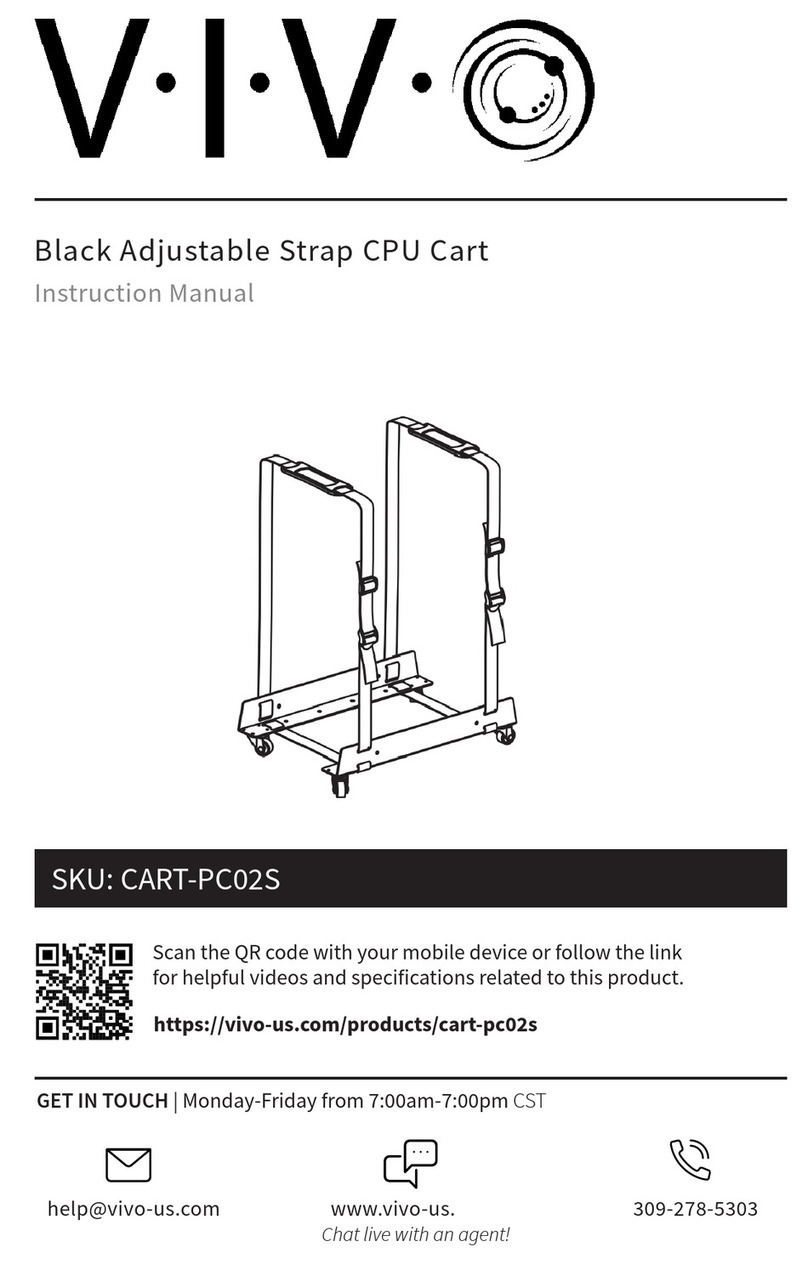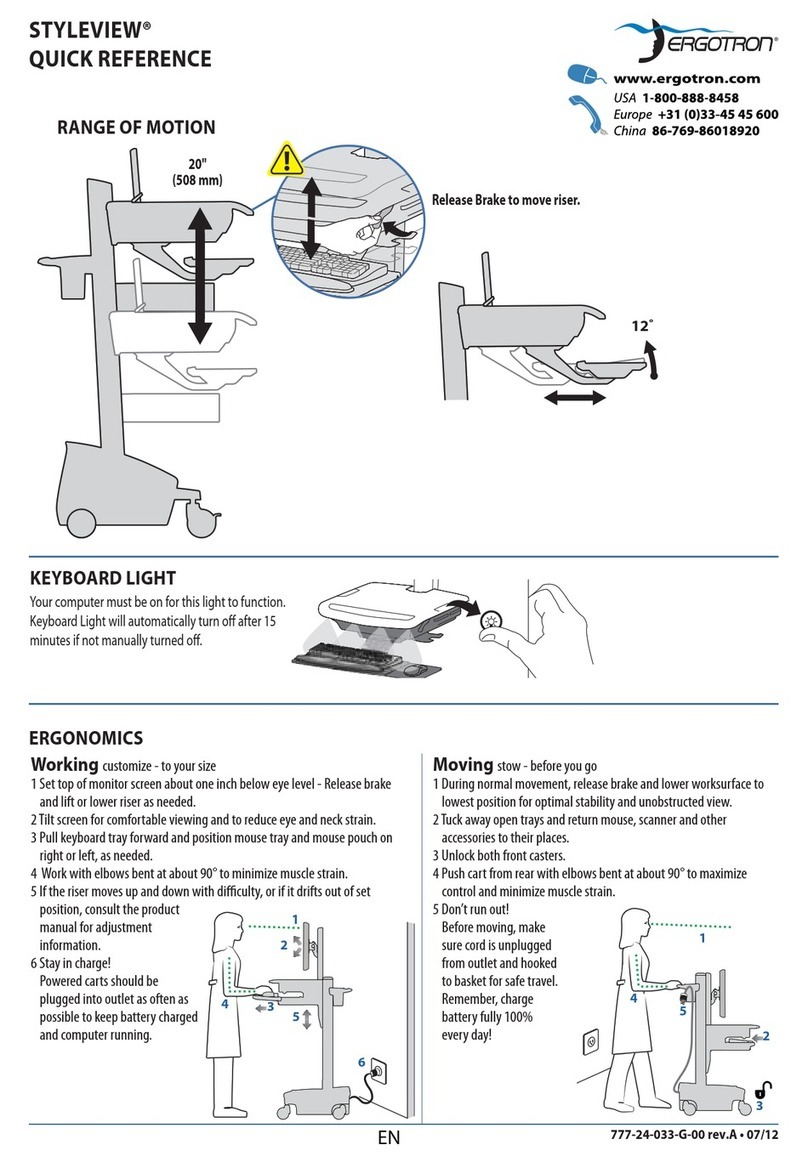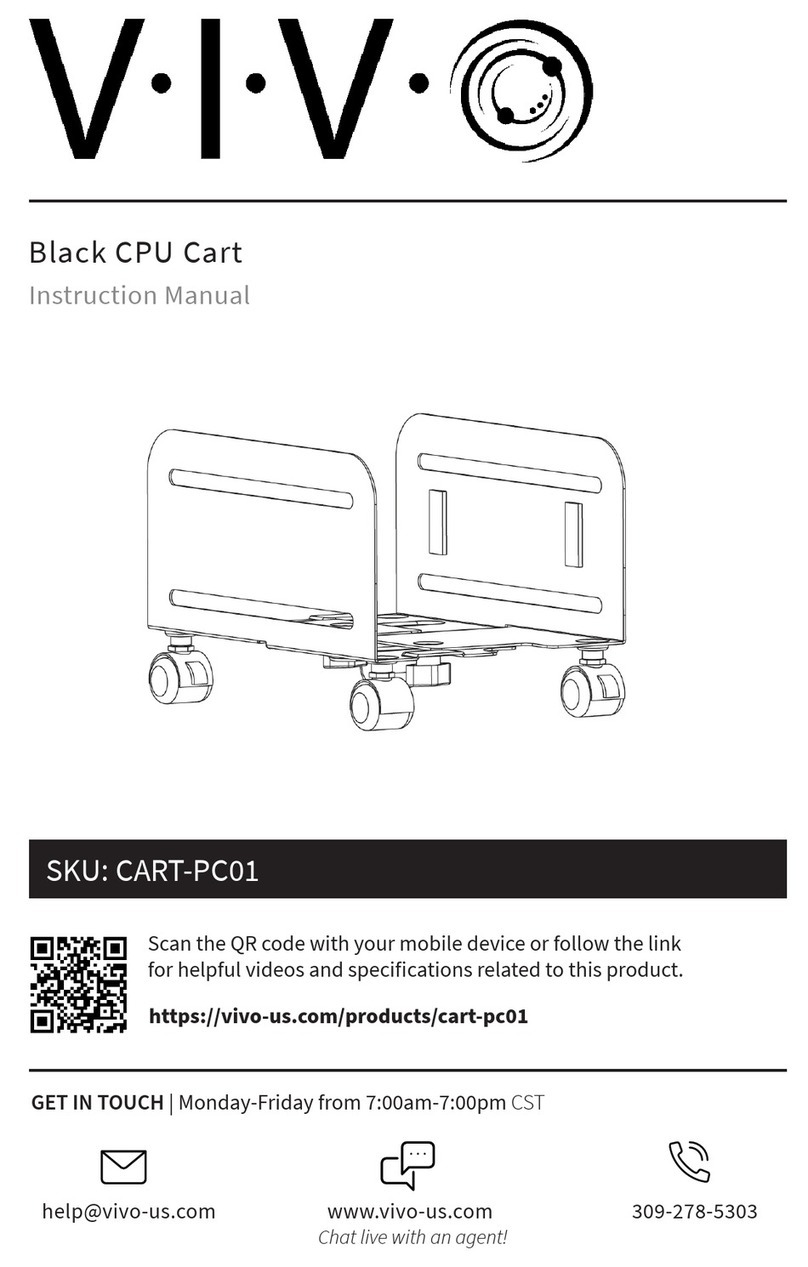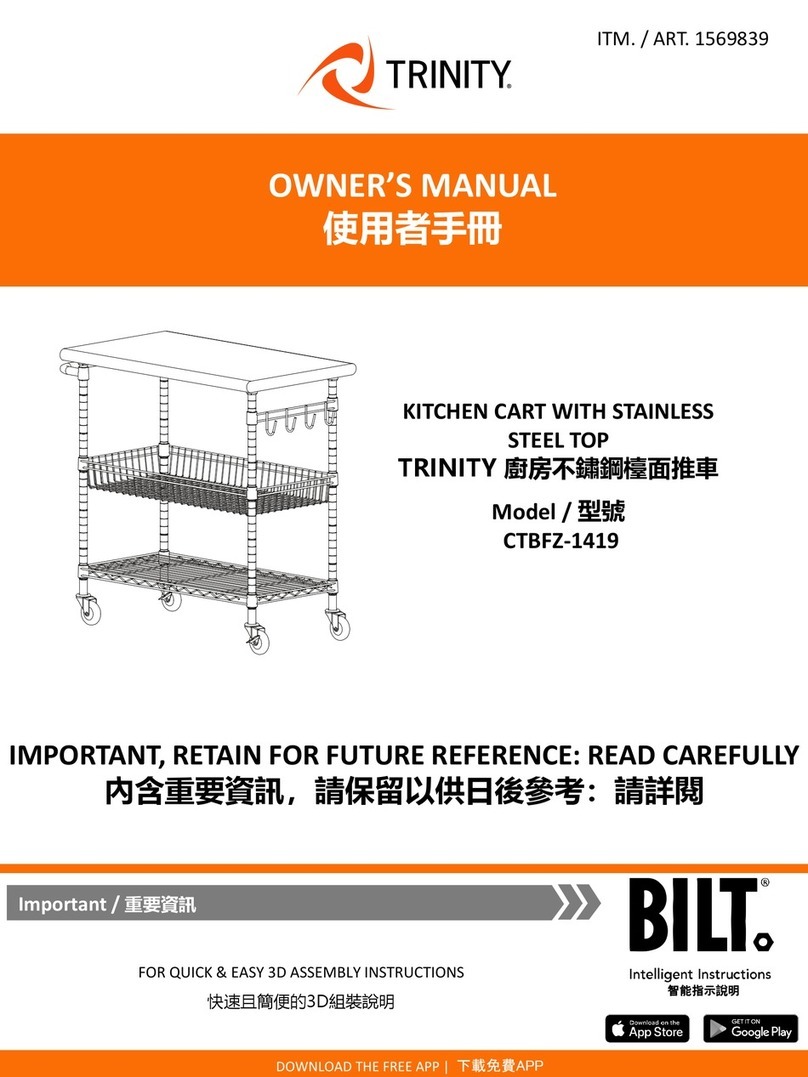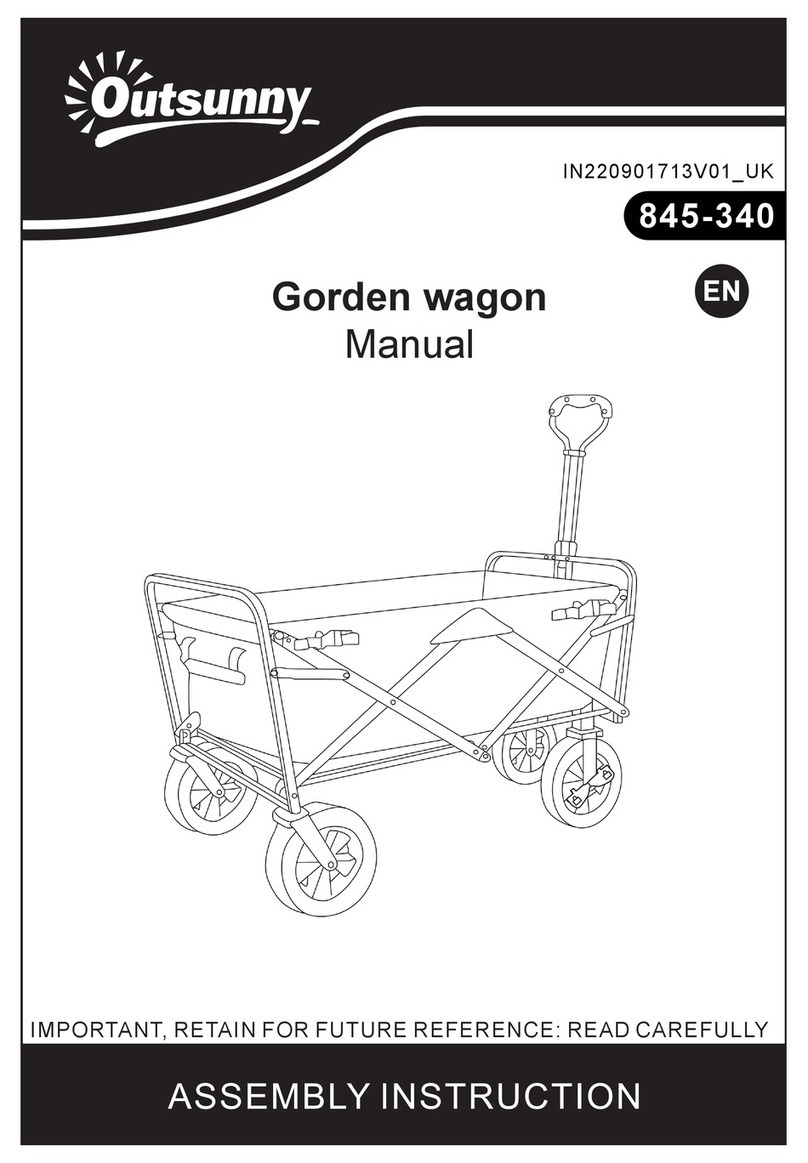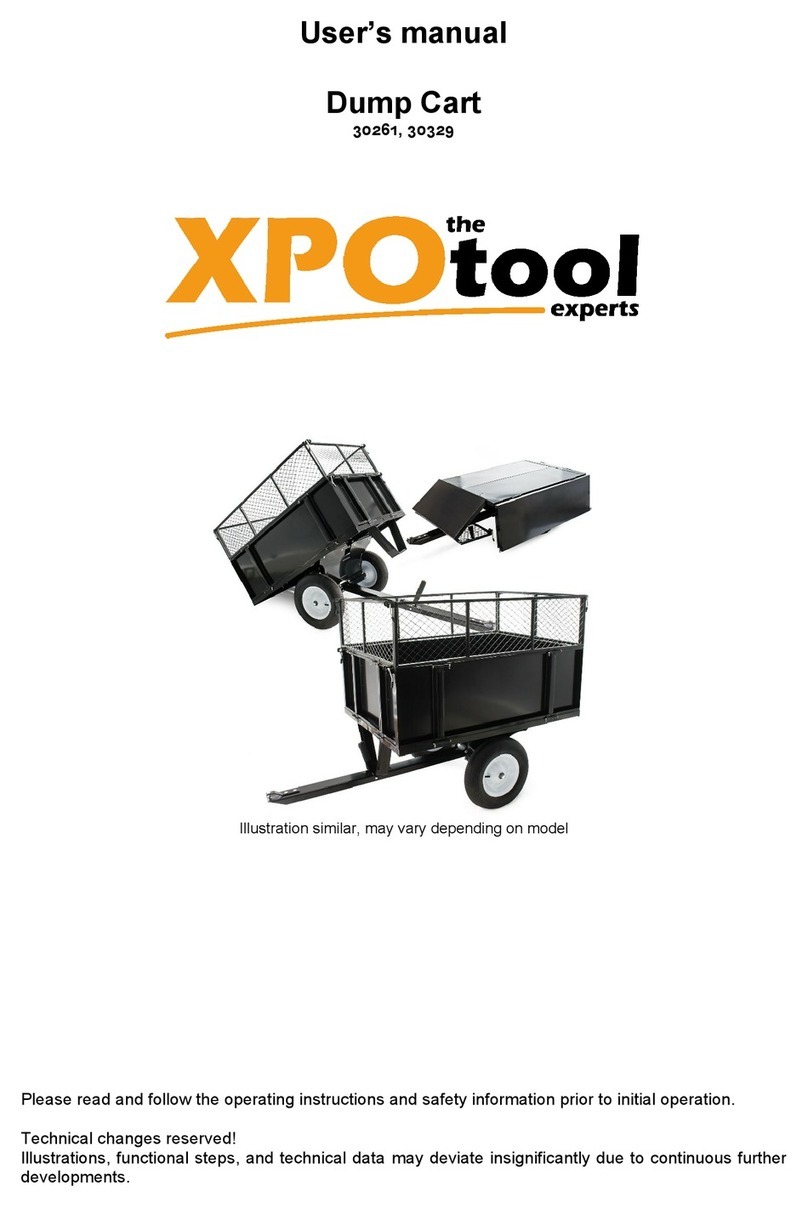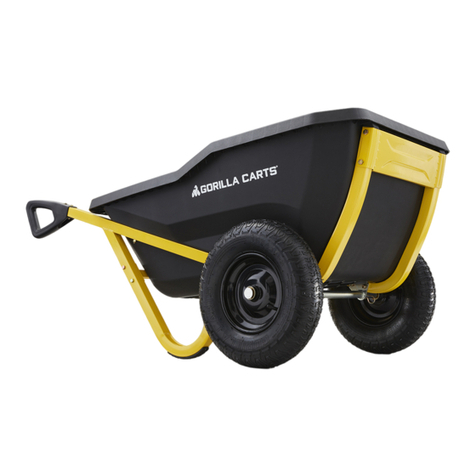
SPTT, manual 1013
Copyright 2013 Vestil Manufacturing Corp. Page 2 of 8
Safety Principles
Vestil Manufacturing Corp. created this manual to acquaint owners and users of our hoppers with safe use and
maintenance procedures. Although Vestil diligently strives to identify foreseeable, hazardous situations, this manual
cannot address every conceivable danger. The end-user is ultimately responsible for exercising sound judgment at all
times.
The mechanisms of each hopper are relatively intuitive to operate. Nonetheless, every person who might use or
maintain this product should be familiar with the instructions provided in this manual BEFORE using or performing
maintenance on the hopper.
Failure to apply the directions in this manual might lead to serious personal injury or even death. Vestil is not
liable for any injury or property damage that occurs as a consequence of failing to apply either: 1) the instructions that
appear in this manual; or 2) the information disclosed on labels affixed to the product.
To draw attention to hazards that users might encounter, this manual classifies personal injury risks and situations
that could lead to property damage with SIGNAL WORDS. These signal words are used to direct attention to safety
messages. The reader must understand that the signal word chosen indicates the seriousness of the described hazard.
Identifies a hazardous situation which, if not avoided, WILL result in DEATH or
SERIOUS INJURY. Use of this signal word is limited to the most extreme situations.
Identifies a hazardous situation which, if not avoided, COULD result in DEATH or
SERIOUS INJURY.
Indicates a hazardous situation which, if not avoided, COULD result in MINOR or
MODERATE injury.
Identifies practices likely to result in product/property damage, such as operation that might
damage the hopper.
Safety Recommendations:
Study the entire manual before using the product for the first time.Read the manual when necessary to refresh your
understanding of the use, inspection and maintenance instructions. If questions remain after you finish reading this
manual, ask your supervisor or employer for assistance. DO NOT attempt to resolve any problem with the hopper
unless you are authorized to do so and are certain that it will be safe to use afterwards.
Material handling is dangerous. Failure to read and understand the instructions included in this
manual before using or servicing the hopper constitutes misuse. Improper or careless operation might result in
serious personal injuries. Reduce the likelihood of injury by applying the following:
DO NOT use a malfunctioning or structurally damaged hopper. Inspect the hopper according to the inspection
instructions on p. 6. DO NOT use the hopper unless it passes every part of the inspection.
DO NOT ride on or in the hopper.
DO NOT use the hopper if any product label—besides label 419-- is unreadable, damaged, or missing (see
“Label placement diagram” on p. 7). Contact Vestil to order replacement labels.
DO NOT modify the hopper in any way! Modifying the hopper automatically voids the limited warranty AND
might make the hopper unsafe to use.
DO NOT dump the hopper UNLESS all people clear the vicinity.
Only dump the hopper while on a level surface.
Product Specifications
Dimensions and other product specifications appear in the following table:
Model
Volume in
Cubic Yards
(m3)
Volume in cubic
feet (ft3)
Uniform
Maximum Rated
Load in Pounds
(kg)
Overall Dimensions
(W x D x H)
Net Weight
in Pounds
(kg)
SPTT-05 2/3 18 1,000 26¼ in. x 56½ in. x 36 in. 160
(72.7kg)
SPTT-10 1 27 1,500 38¼ in. x 56½ in. x 36 in. 200
(90.9kg)
SPTT-15 1½ 40 2,000 38½ in. x 63 in. 46 in. 270
(122.7kg)


